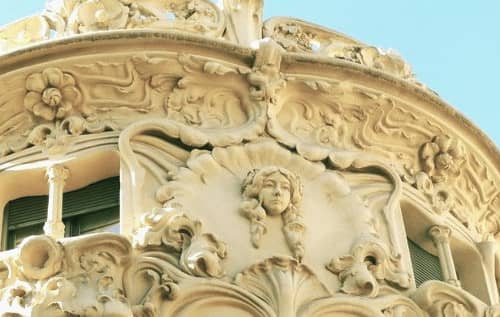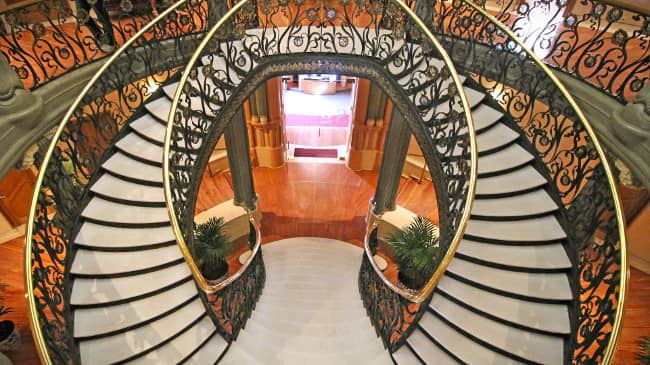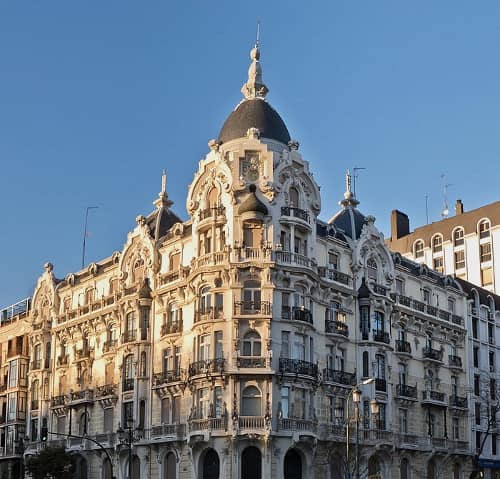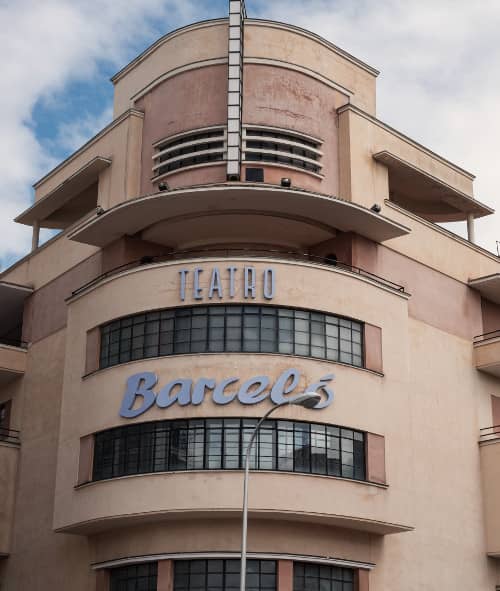
Palacio de Longoria, a jewel of modernist architecture in Madrid
Located in the Chueca district, in the street of Fernando VI, Palacio de Longoria is a perfect example of the development of the Art Nouveau style in Spain.
If you’re lucky enough to be in Madrid during the Architecture Week or the Open House weekend, you’ll have the chance to visit the stunning Palacio Longoria. Inhabited by the Society of Authors and Publishers (SGAE), it can only be appreciated from the outside if not during these events.
The Art Nouveau, better known as “modernist architecture” in Madrid is a worldwide movement of the late 19th and early 20th centuries that had a variety of titles: Art Nouveau in France, Secession in Austria, Tiffany in the USA, and the Sapin style in Switzerland. It is characterized by a return to curved lines, inspired by nature and medieval styles of architecture and ornamentation, but also by a reaction to industrialization, which “concretizes” and “uglifies” everything, favoring above all the practicality of mass-produced buildings.

It’s a trend that ran through all art forms, in very singular ways in different parts of the world. Decorative arts, graphic design, painting and architecture were all affected, with artists helping and inspiring each others, and often working on joint projects. The common thread, however, was a return to the forms offered by nature (fauna, flora, landscape lines and colors). It’s an art form that no longer saw itself as academic or elitist, and which therefore invited itself into everyday life, trying to touch the modern human being at the beginning of the 20th century.
That’s what the sublime Longoria Palace is all about; offering a round, floral, luminous and brilliant aesthetic. Commissioned by finance executive Javier González Longoria, it was designed by the Catalan architect José Grases Riera in 1904. The owner wanted to locate his bank on the first floor and his residence on the upper floors. The interior is as elaborate as the exterior façade. The staircases are bathed in light by a glass dome, and the banister itself is decorated with brass leaves and flowers. A courtyard and garden open onto the back façade, with its palm-sculpted columns.
The twisted shapes, the statues and the mascarons are a true immersion in Madrid’s modernist movement, which is very present in this district.

José Grases Riera is often associated with the famous Antonio Gaudí. Although he didn’t go as far in his use of color and materials, he did embrace a movement that aimed to give human beings more harmonious, natural forms in an increasingly rhythmic, hard-to-follow urban world. Academically trained, he also designed the huge statue dedicated to Alfonso the XIInd on the banks of the Buen Retiro pond.
This building changed owners several times, passing into the hands of the Spanish Dental Company, then, after renovation, to the Society of Authors and Publishers in 1950.
Today, it is a precious testimony to Madrid’s modernist style, which developed in a very singular way, different from Barcelona, for example.


A few years before the First World War, the Art Nouveau movement evolved into a more geometric style, which would lead to a whole new moment in Modernism until the 1940s: the Art Deco. Thus, when one thinks of a typical Modernist building in the capital, the Palacio Longoria, the Casa Gallardo (Plaza de Espana), or the Compañía Colonial building (Calle Mayor) come to mind, there are also examples of Art Deco, such as the Teatro Barcelo, announcing a return to strict lines.
If you want to know some other stories about this Majestic Madrid do not miss our free tour Madrid . We will be waiting for you with open arms!